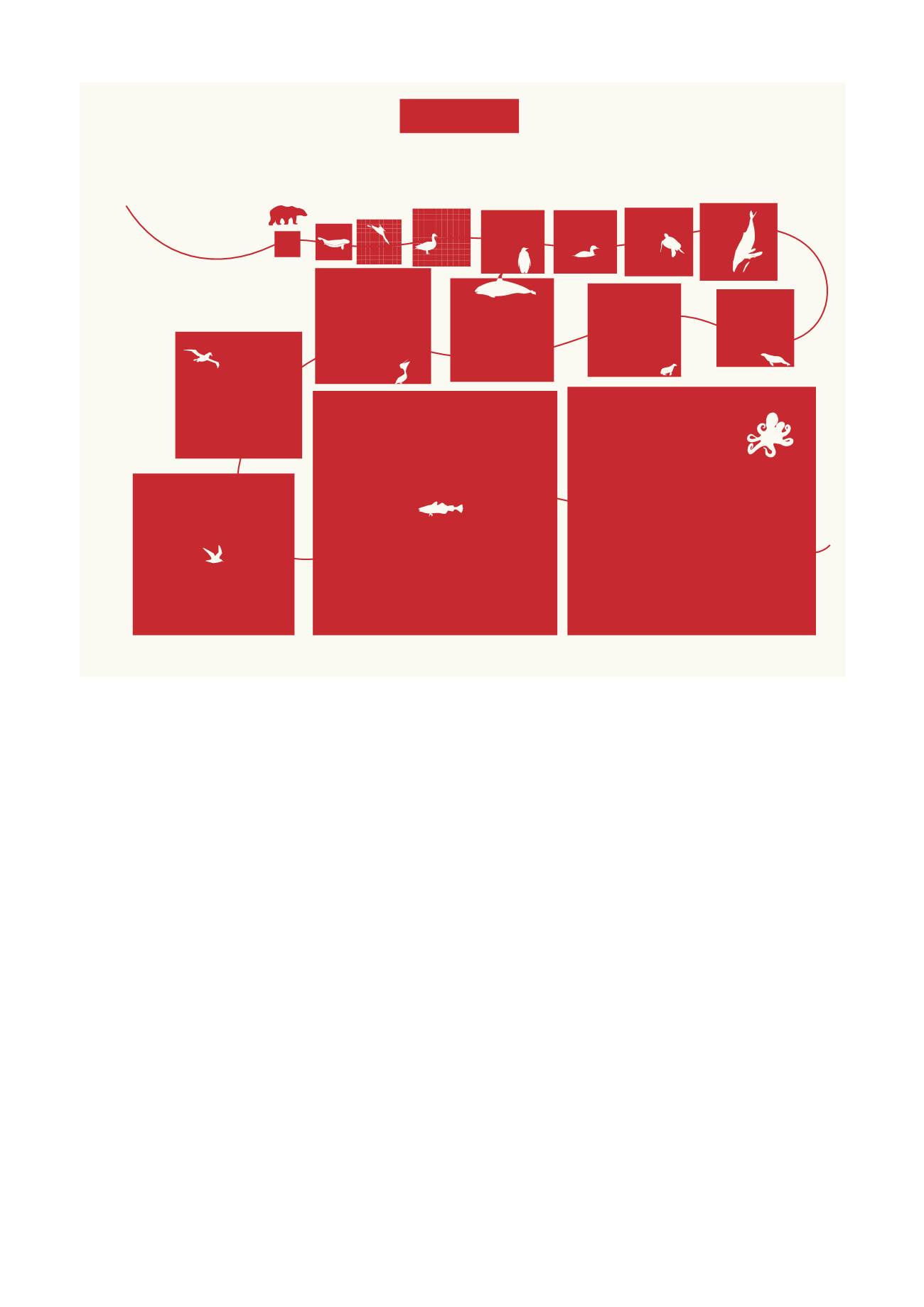

17
Marine Litter
Vital Graphics
buoyant and floats on the surface; however the ocean
floor may be its final resting place (Goldberg, 1997). Large
items, including discarded or lost fishing gear, quickly
sink to the sea floor. These items can smother benthic
organisms, crush vegetation and coral and turn sediments
anoxic (Kuhn et al., 2015). Examples include fishing line
wrapped around coral colonies causing death, plastic
bags directly smothering organisms or reducing light
penetration, and large items dragged along the sea floor
causing physical damage (Kuhn et al., 2015; Yoshikawa
and Asoh, 2004).
Floating away
The artificial habitats provided by floating marine debris
can support a diverse marine ecosystem. Kiessling
et al. (2015) report that globally, 387 taxa, including
microorganisms, seaweed, and invertebrates, have been
found on floating litter. They found that, in most of the
world’s oceans, stalked barnacles (a prominent fouling
species) were the most common organisms colonizing
floating litter. It is not only large mats of litter that provide
a home for marine organisms; one species of water
strider has found that microplastic particles provide
an ideal site to lay eggs. Goldstein et al. (2012) suggest
that the increase in numbers of the pelagic water strider
Halobates sericues
in the region of the North Pacific
Subtropical Gyre is a direct result of the increase in hard
substrate provided by microplastic.
Floating litter provides an additional dispersal mechanism
for natural floating materials such as kelp mats, pumice
and wood. Although these rafts of rubbish, moved by
the same wind and currents as natural material, do not
provide new dispersal pathways, the persistence and
wide distribution of large amounts of plastic in the oceans
provides greater opportunity for dispersal (Lewis et al.,
2005). It has been suggested that debris could play a part
in the spread of invasive species. Kiessling et al. (2015)
document numerous examples of potential invaders
found on marine litter beyond their natural dispersal
range. They conclude that changes to the temporal and
spatial availability of rafts, caused by the growing quantity
of marine litter, probably facilitate the establishment of
species in new regions.
Marine ducks Polar bear Penguins Grebes Turtles Whales True seals Divers Eared seals Toothed whales Pelicans, gannets and boobies, tropicbirds Albatross and other Procellariiformes Gulls, skuas, terns and auks Fish Invertebrates 1 3 2 5 6 6 7 9 9 13 16 20 24 39 89 92 Dugongs and sea cows Number of species with documented records of entanglement in marine debris Plasticized animal species - Entangled Source: Kühn, S., et al., Deleterious E ects of Litter on Marine Life, in Bergmann, M., et al., Marine Anthropogenic Litter, Springer, 2015 (38.5) (17.0%) (29.9%) (24.6%) (47.4%) (100%) (28.1%) (0.27%) (0.06%) (100%) (69.2%) (26.1%) (33.3%) (60%) (40%) (100%)IMPACTS


















